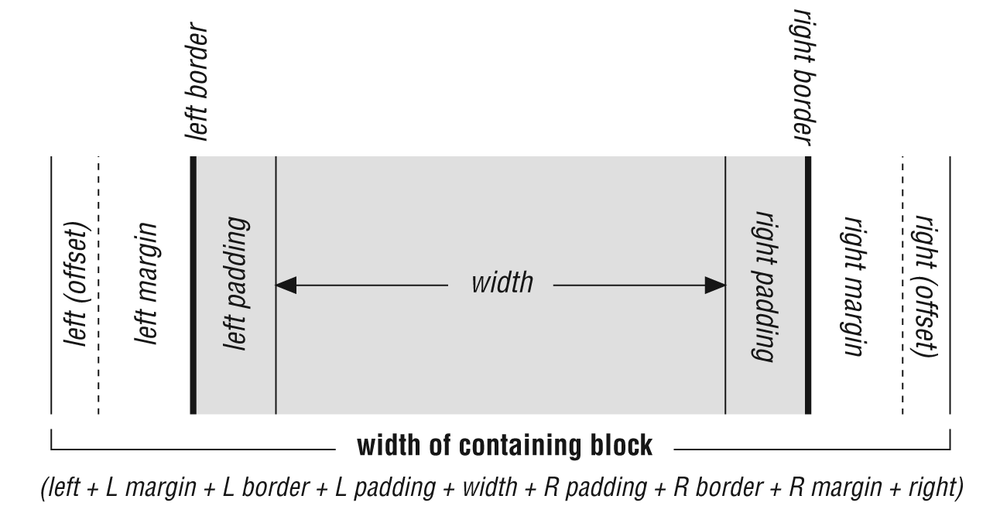Calculating Position
While specifying a position using the offset properties is a fairly straightforward affair, things can get complicated when offset measurements are combined with the margins and content width of the element and the width constraints of the containing block. In fact, the CSS 2.1 specification provides a dizzyingly detailed list of rules and constraints for dealing with conflicting and unspecified values.
In the interest of brevity, this section provides a general and practical summary of those rules that should serve you well in most instances.
The CSS 2.1 specification provides a formula for all the values that make up the width of a containing block. It is presented in Figure 21-18 in graphical form because it is helpful to visualize the values that span across a containing block. Bear in mind that the calculated sum of all the interior values must be equal to the width of the containing block. This same structure applies in the vertical direction as well.

Figure 21-18. The sum of values in the containing block
In very generalized terms, when values are conflicting or unspecified, the space tends to be adjusted on the right side for left-to-right (ltr) languages (or the left side for right-to-left languages). Height issues are resolved by adjusting the space at the bottom of the positioned element.
In instances where all values have been specified (i.e., none of them ...
Get Web Design in a Nutshell, 3rd Edition now with the O’Reilly learning platform.
O’Reilly members experience books, live events, courses curated by job role, and more from O’Reilly and nearly 200 top publishers.

